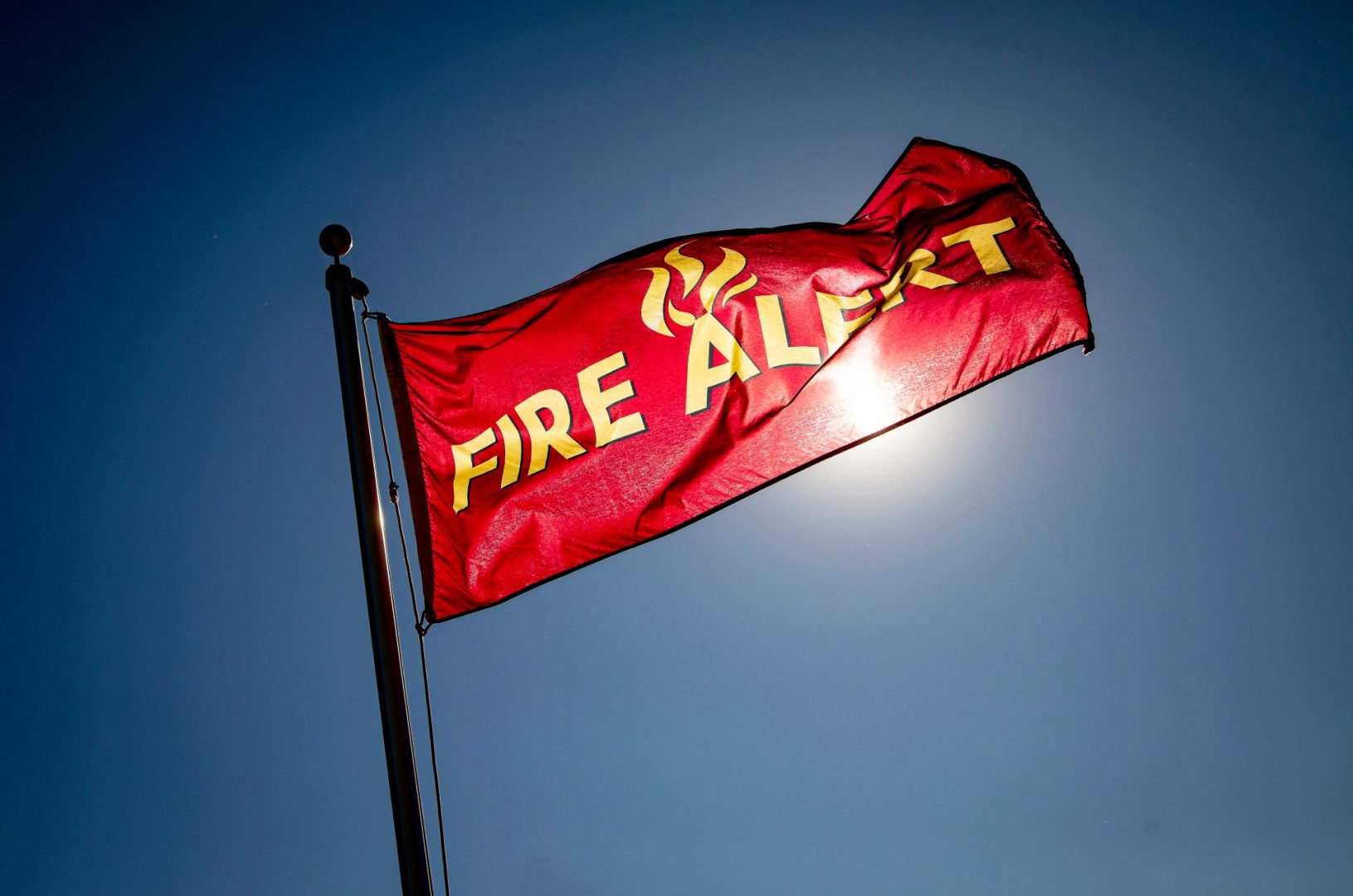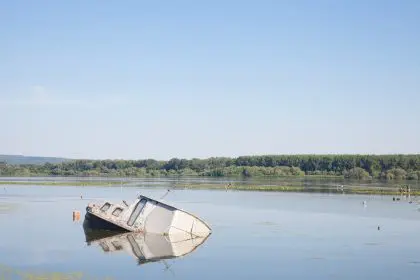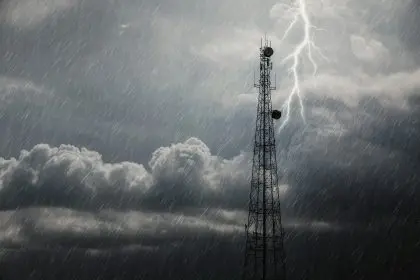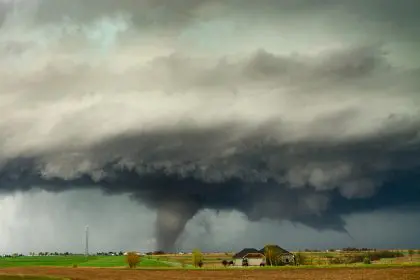Extreme fire danger has prompted officials to issue a red flag warning for nearly the entire state of Minnesota today, May 11, as a dangerous combination of strong winds and low humidity creates perfect conditions for wildfires to spread rapidly. The warning affects 77 counties and places strict limitations on outdoor burning activities.
Critical fire danger spans most of Minnesota
The National Weather Service has issued the red flag warning effective from 11 a.m. to 10 p.m. today across more than three-quarters of Minnesota’s counties. This urgent designation indicates that current weather conditions could allow fires to spread explosively and become difficult or impossible to control.
The warning covers a vast portion of the state, including the Twin Cities metro area and stretching from the Canadian border to the Iowa state line. Northern counties like Koochiching, Lake of the Woods, and St. Louis are included, as well as southern counties such as Blue Earth, Faribault, and Rock.
Central Minnesota counties under the warning include Stearns, Morrison, and Todd, while western counties like Clay, Otter Tail, and Big Stone are also affected. The warning extends to eastern counties including Washington, Chisago, and Pine, creating a nearly statewide fire danger zone.
The expansive nature of this warning is unusual and reflects the seriousness of the current fire danger. Counties affected represent diverse landscapes from prairie grasslands to the northern forests, all of which face elevated risk under today’s conditions.
Current weather patterns creating the dangerous fire conditions include strong winds that can quickly spread flames and very low relative humidity that has dried vegetation to the point where it can ignite easily. These factors combine to create a scenario where even small sparks could rapidly develop into major wildfires.
What the red flag warning means for residents
A red flag warning represents the highest alert level for fire danger and triggers specific restrictions designed to prevent human-caused fires. Understanding and following these limitations is crucial for public safety during this high-risk period.
All outdoor burning is prohibited in counties under the red flag warning. The Minnesota Department of Natural Resources will not issue or activate any open burning permits during this time, and existing permits are temporarily suspended until conditions improve.
Campfires are strongly discouraged throughout the warning area, even in designated fire rings at campgrounds or private property. The risk of embers escaping and igniting surrounding dry vegetation is simply too great under current conditions.
Residents who have conducted any burning in recent days should check their burn piles thoroughly to ensure they are completely extinguished with no remaining hot spots. Even fires that appear to be out may harbor hidden embers that today’s strong winds could reignite and spread.
Activities that could create sparks near dry vegetation should be avoided entirely. This includes using outdoor equipment like lawn mowers, chainsaws, or other power tools on dry grass or brush. Even seemingly innocent actions like discarding cigarettes outdoors or parking vehicles on dry grass can provide the spark needed to start a wildfire under these conditions.
Local fire departments and emergency management agencies throughout the affected counties are on high alert, with many increasing staffing and readying equipment in preparation for potential wildfires. However, prevention remains the most effective strategy during red flag conditions.
Additional fire weather watch issued for tomorrow
Beyond today’s imminent danger, fire officials are also warning of continued fire risk into Monday. A fire weather watch has been issued for 64 Minnesota counties where forecasts predict ongoing dangerous fire conditions on May 12.
The fire weather watch indicates that weather patterns conducive to rapid fire spread are likely to develop again tomorrow. While slightly less urgent than today’s red flag warning, this designation signals that residents should remain vigilant and continue to avoid outdoor burning activities.
Counties under the fire weather watch include many of the same areas affected by today’s red flag warning, indicating that the dangerous fire conditions may persist for multiple days across much of Minnesota.
The continued dry conditions coupled with strong winds create a concerning pattern for fire officials. Without significant rainfall, vegetation throughout the state remains exceptionally dry and ready to burn. Successive days of high fire danger compound the risk, as fire resources may become stretched if multiple incidents occur.
Weather forecasters and fire management officials will continue monitoring conditions closely, and the fire weather watch could be upgraded to another red flag warning if conditions warrant. Residents in the affected areas should stay informed through local news, weather alerts, and official social media channels.
Understanding fire danger terms and classifications
The terminology used to describe fire danger can sometimes cause confusion among the public. Understanding the different alert levels helps residents recognize the severity of current conditions and respond appropriately.
A red flag warning represents the highest level of fire danger alert and is issued when critical fire weather conditions are either occurring or will occur within 24 hours. These conditions typically include relative humidity of 25% or lower combined with sustained winds of at least 15 mph or frequent gusts to 25 mph or higher.
Under red flag conditions, any fires that develop will likely spread rapidly, exhibit extreme fire behavior, and resist control efforts. These warnings are not issued lightly and signal truly dangerous fire potential that requires immediate public attention and compliance with burning restrictions.
A fire weather watch indicates that dangerous fire weather conditions are possible but not imminent or occurring. Watches are typically issued 24 to 72 hours in advance of expected conditions to allow fire agencies and the public to prepare. Many watches are later upgraded to red flag warnings as the forecast becomes more certain.
Both designations are part of the National Weather Service’s fire weather program, which works in coordination with federal and state forestry and land management agencies. The system aims to provide advance warning of conditions that could lead to extreme fire behavior.
It’s important to note that these designations reflect weather conditions conducive to fire spread, not the actual presence of fires. However, when these alerts are issued, the public should assume that any fire that starts could quickly become dangerous and act accordingly.
How to stay safe during extreme fire danger
During periods of extreme fire danger like today’s red flag warning, taking proactive steps to prevent fires and prepare for potential emergencies can protect lives and property. Simple precautions can make a significant difference in preventing wildfires.
Postpone any planned outdoor burning activities until conditions improve and the red flag warning expires. This includes recreational campfires, brush pile burning, and agricultural burning. The temporary inconvenience of delaying these activities is far outweighed by the risk they would pose under current conditions.
Properly dispose of smoking materials in appropriate containers, never throwing cigarettes from vehicles or onto the ground outdoors. A single cigarette butt can provide enough heat to ignite dry vegetation under red flag conditions.
Avoid parking vehicles on dry grass or operating equipment that could create sparks near dry vegetation. Hot exhaust systems can easily ignite dry grasses, and equipment like lawn mowers, weed trimmers, or chainsaws can create sparks if they strike rocks or other hard objects.
Secure chains properly when towing trailers or equipment, as chains dragging on pavement can create sparks that may ignite roadside vegetation. This is a common but often overlooked cause of wildfires during dry conditions.
Create defensible space around homes and structures, especially in rural or wildland-urban interface areas. This includes keeping grass short near buildings, removing dead vegetation, and ensuring that flammable materials like firewood are stored away from structures.
Review emergency evacuation plans with family members, including multiple exit routes from your neighborhood and a designated meeting place. Having emergency supplies and important documents readily accessible can save precious time if evacuation becomes necessary.
Stay informed about changing conditions by monitoring local news, weather apps, or emergency management social media accounts. Fire conditions can change rapidly, and staying aware of developments helps ensure your family’s safety.
Resources for monitoring fire conditions
Staying informed about evolving fire conditions is essential during red flag warnings and fire weather watches. Several resources provide up-to-date information to help residents track changes and make informed decisions.
The National Weather Service website and social media accounts offer the most current information on fire weather warnings and watches. Their forecasters continually update predictions based on the latest atmospheric data and can provide the most accurate timeline for when dangerous conditions might improve.
The Minnesota Department of Natural Resources maintains a daily fire danger rating map on their website that shows current conditions across different regions of the state. This resource helps residents understand how fire risk may vary even within the warning area.
Local emergency management agencies and county sheriff’s offices often share critical updates through their social media channels and websites. These local sources can provide specific information about restrictions or emergency responses in individual communities.
Mobile apps like the FEMA app or various weather alert applications can send notifications directly to smartphones when warnings are issued or updated for your specific location. These push notifications ensure you receive critical information even when not actively monitoring news sources.
Community notification systems like CodeRED or Everbridge, which many Minnesota counties use, can deliver emergency alerts via text, email, or phone calls. Residents are encouraged to register for these free services through their county emergency management websites.
For travelers and those recreating outdoors, visitor centers at state and national parks can provide current information about fire restrictions and conditions in specific recreation areas. Always check with park staff about current fire rules before planning any activities involving fire.
By utilizing these resources and remaining vigilant during the current red flag warning, Minnesotans can help prevent devastating wildfires and protect their communities from harm during this period of extreme fire danger.












